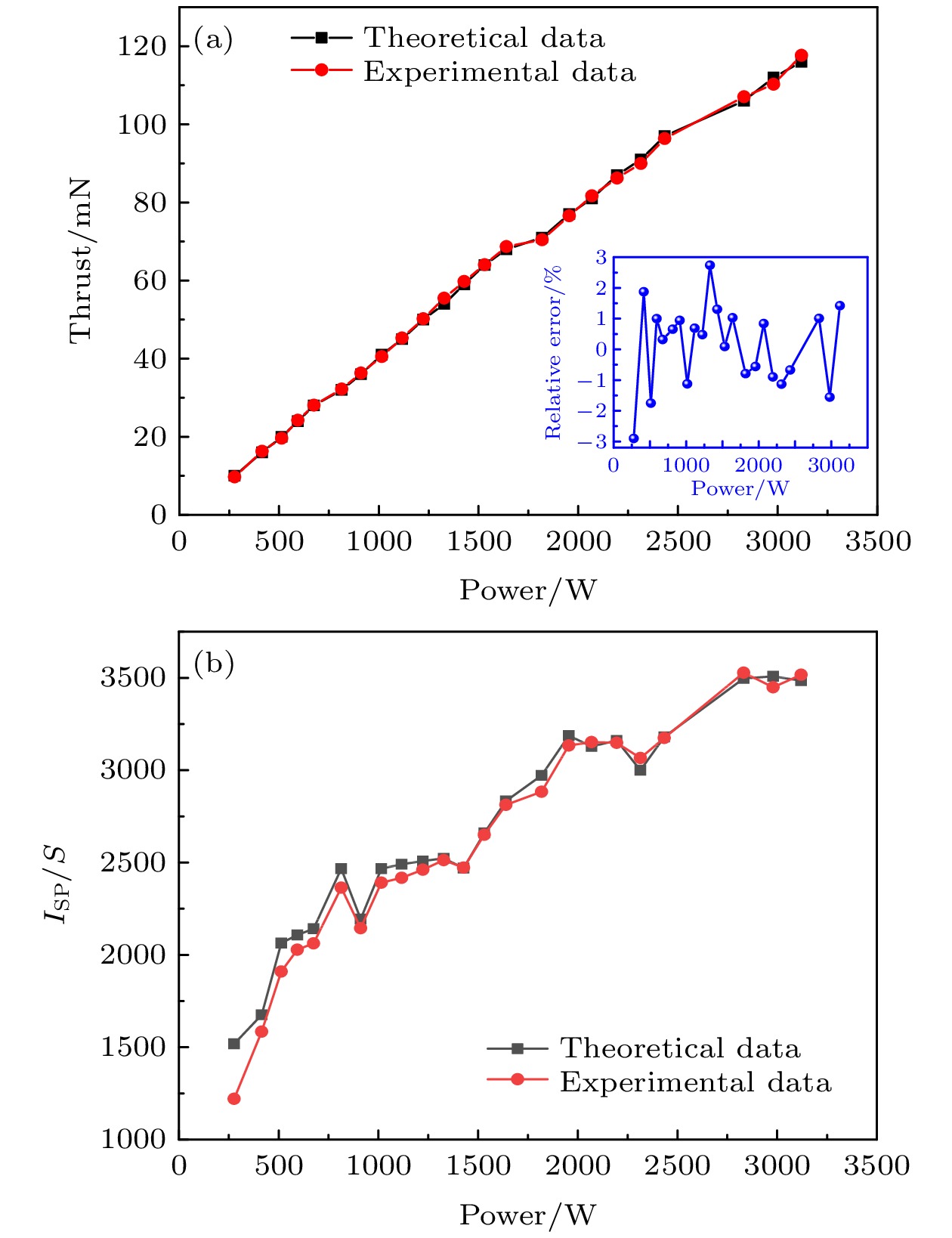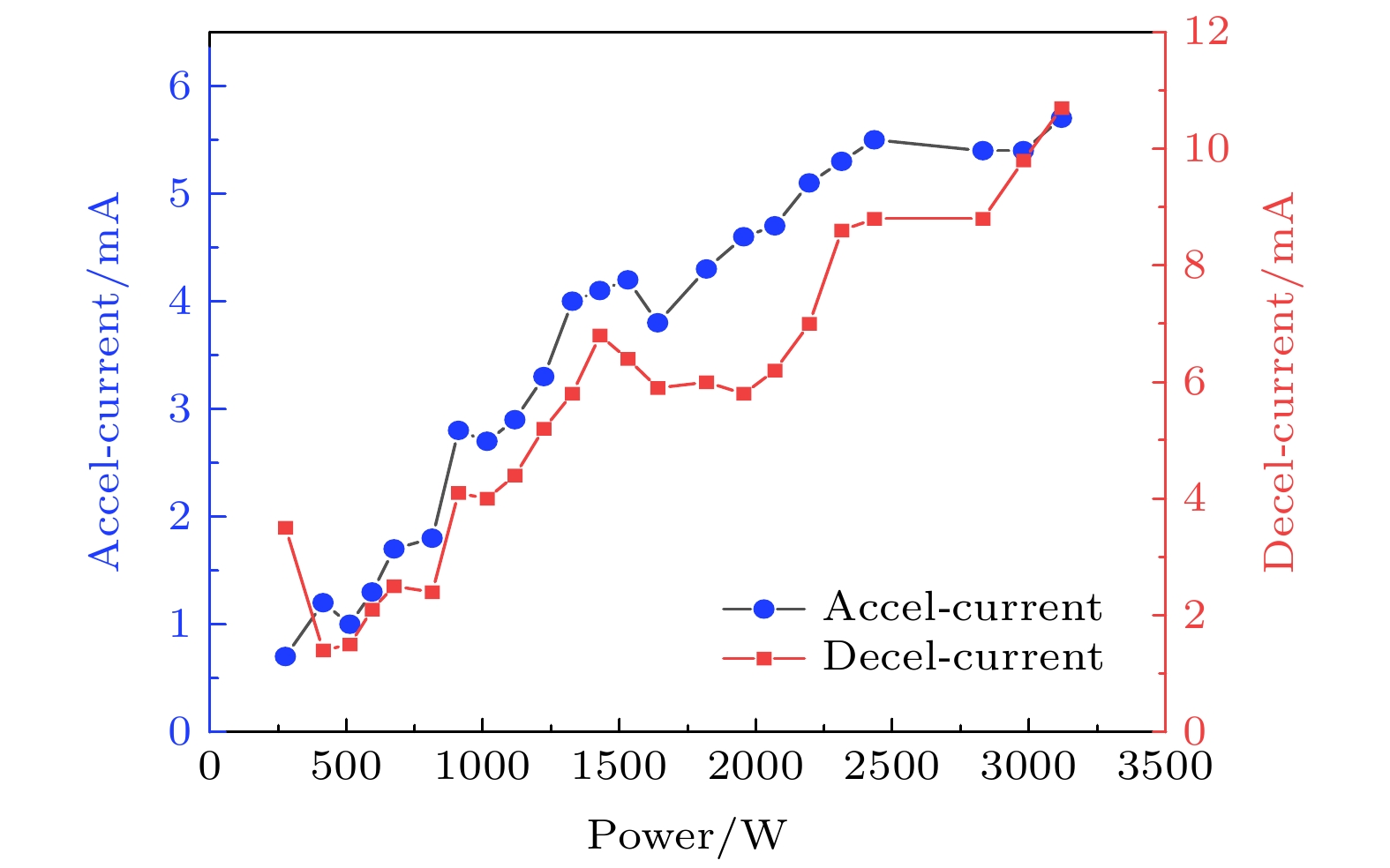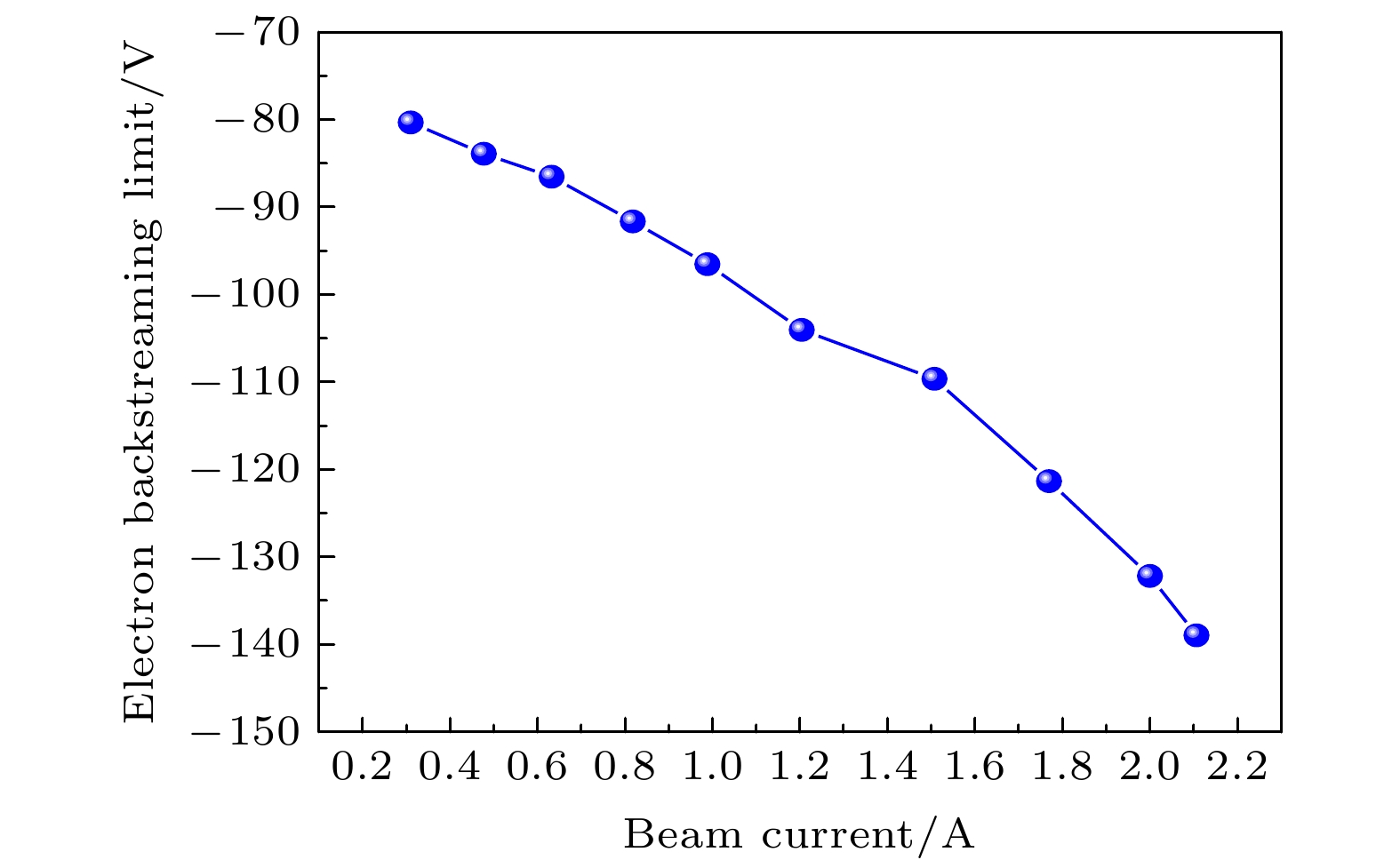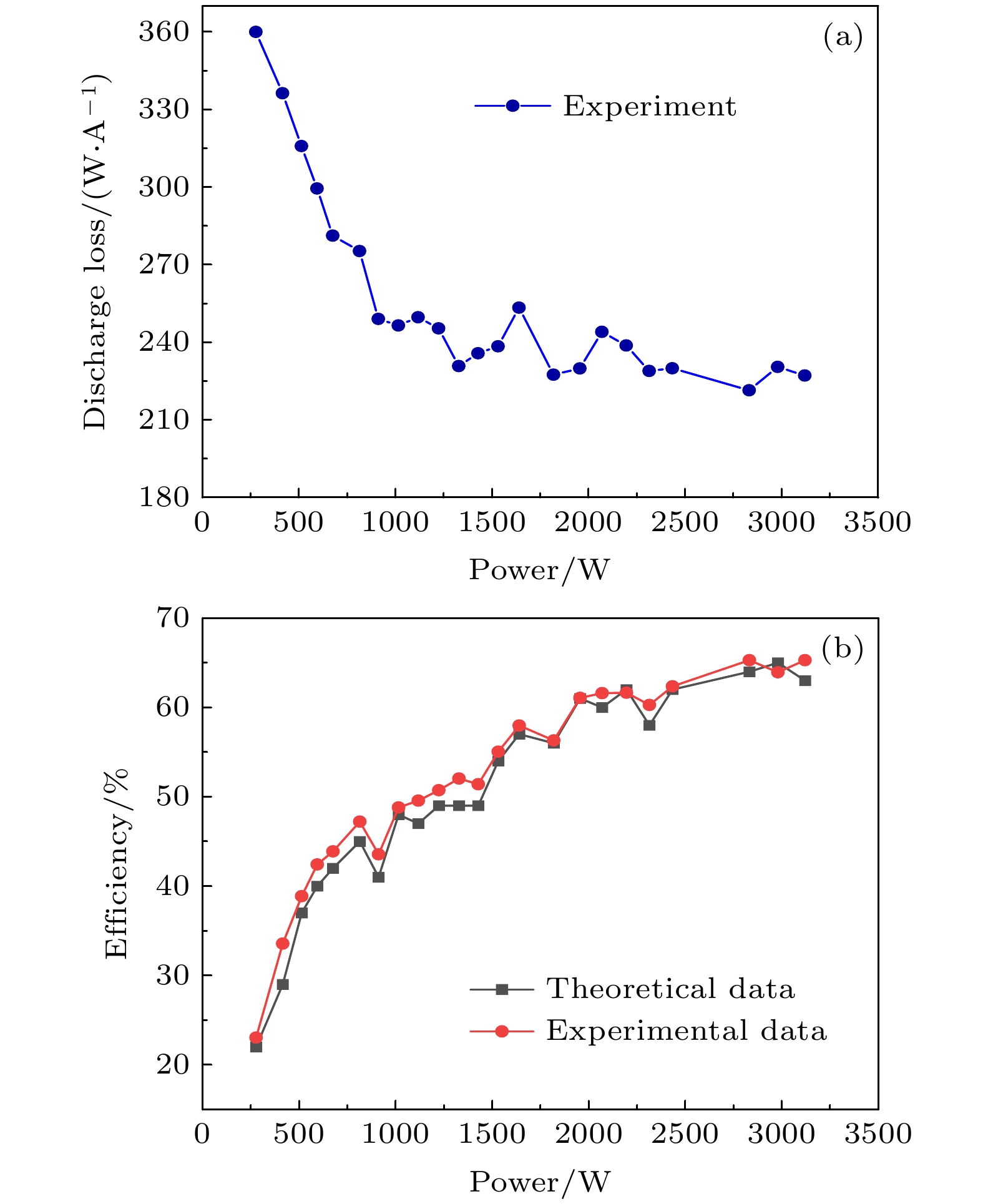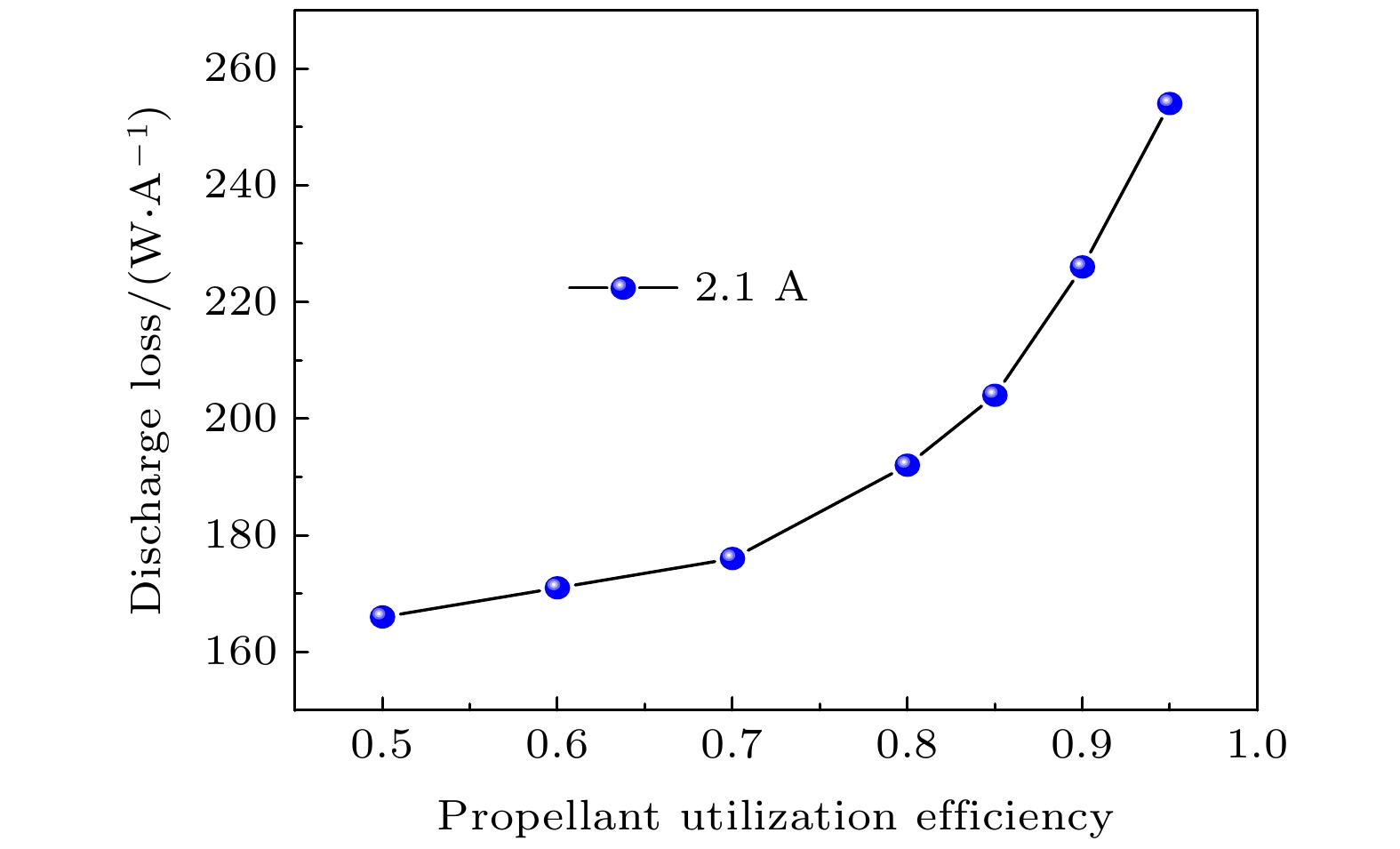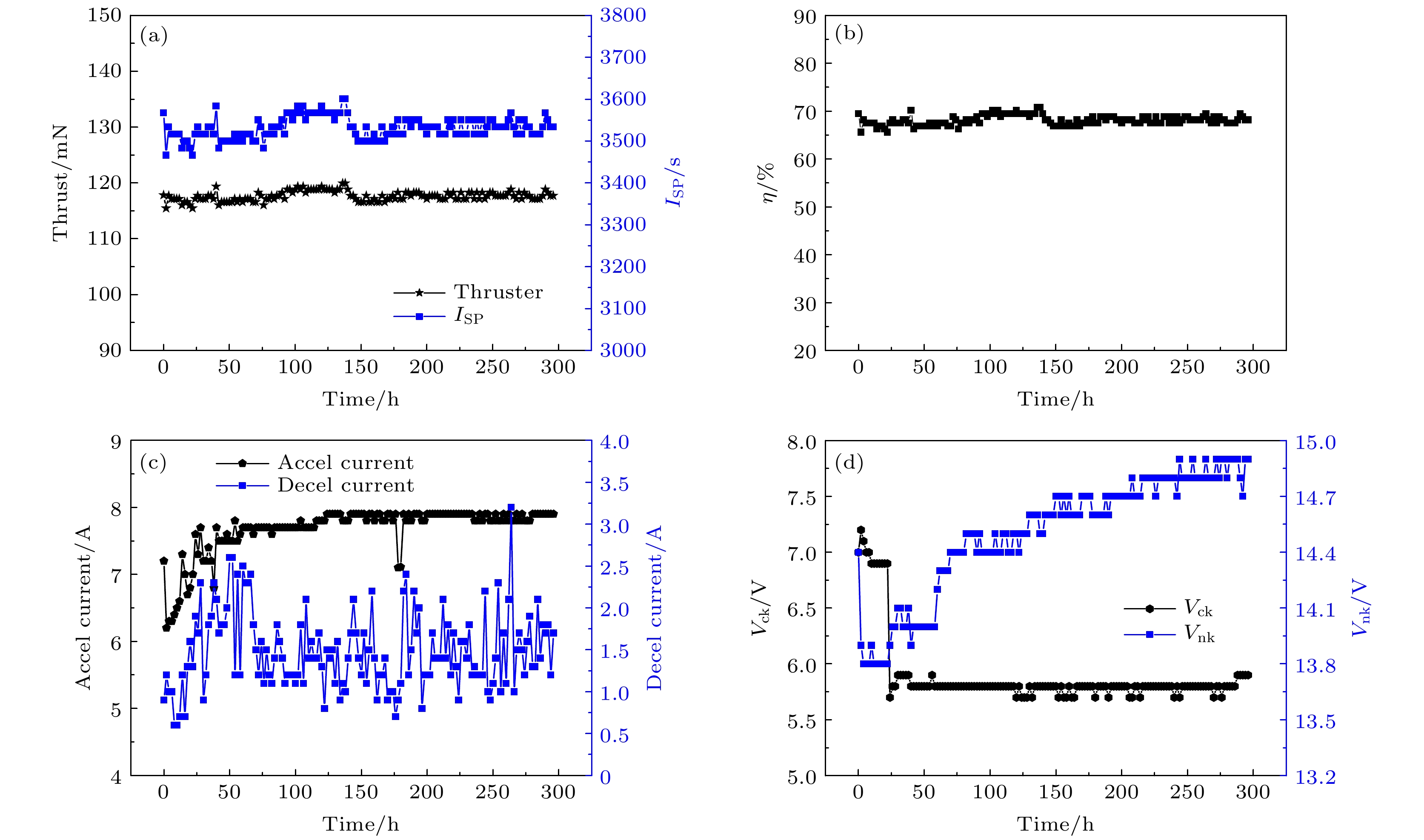-
针对我国小行星探测任务对电推进系统离子推力器设计要求, 基于等离子体基本理论建立了多模式离子推力器输入参数与输出特性关系, 完成各工作点下屏栅电压、束电流、阳极电流、加速电压, 流率等输入参数设计, 采用试验研究和理论分析的方法研究了推力器工作特性. 试验结果表明: 在设计输入参数下, 23个工作点推力最大误差小于3%, 比冲最大误差小于4%, 在功率为289—3106 W下, 推力为9.7—117.6 mN, 比冲为1220—3517 s, 效率为23.4%—67.8%, 电子返流极限电压随着推力增加单调减小, 最小、最大推力下分别为–79.5 V和–137 V, 放电损耗随着功率增大从359.7 W/A下降到210 W/A, 并在886 W时存在明显拐点, 效率随功率增大而上升, 在 1700 W后增速变缓并趋于稳定, 在轨应用可综合推力器性能、任务剖面要求、寿命, 合理设计输入参数区间, 制定控制策略.In view of the requirements for the application of electric propulsion system to China's asteroid deep space exploration mission, the relationship between input parameters and output characteristics of the thruster is established based on the basic plasma theory, and the input parameters such as screen grid voltage, beam current, anode current, acceleration voltage and propellent flow rate at each operating point are designed. The operating characteristics of the thruster are studied experimentally and theoretically. The test results show that under the design input parameter values, the maximum error of thrust is less than 3% and the maximum error of specific impulse is less than 4% at 23 operating points, the ion thruster can operate steadily in an input power range of 289–3106 W, thrust range of 9.7–117 mN, specific impulse range of 1220–3517 s, and efficiency range of 23.4%–67.8%. The electron backstreaming limited voltage decreases monotonically with thrust increasing and its minimum and maximum thrust value are 79.5 V and –137 V, respectively. The discharge loss decreases from 359.7 to 210 W/A as the power increases, and there is an adjusted turning at the input power 886 W, the efficiency increases with power increasing and after 1700 W the efficiency growth rate slows down and stabilizes. The optimum operating interval should be selected in practical on-orbit application. Controlling these parameters reasonably can improve thruster performance and lifetime. A 300-h wear test shows that the thruster works stably and the performance indicators meet the design requirements of ±3% uncertainty.
-
Keywords:
- ion thruster /
- multi-mode /
- input parameter design /
- discharge loss
[1] Burak K K, Deborah A L 2017 J. Propul. Power 33 264
 Google Scholar
Google Scholar
[2] Li J X, Wang Z H, Zhang Y B, Fu H M, Liu C R, Krishnaswamy S 2016 J. Propul. Power 32 948
 Google Scholar
Google Scholar
[3] Williams L T, Walker M L R 2014 J. Propul. Power 30 645
 Google Scholar
Google Scholar
[4] Rawlin V K, Sovey J S, Hamley J A 1999 Presented at the 35th AIAA/ASME/SAE/ASEE Joint Propulsion Conference & Exhibit Albuquerque, USA, September 28–30, 1999 p99-4612-1
[5] Brophy J R, MareuceiM G, Ganapathi C B, Garner C E, Henry M D, Nakazono B, Noon D 2003 Presented at the 39th AIAA/ASME/SAE/ASEE Joint Propulsion Conference & Exhibit Huntsville, USA, July 20–23, 2003 p2003-4542-1
[6] Rayman M D, Varghese P, Lehman D H, Livesay L 2000 Acta Astronaut. 47 475
 Google Scholar
Google Scholar
[7] Garner C E, Rayman M D, Brophy J R, Mikes S C 2011 Presented at the 47th AIAA/ASME/SAE/ASEE Joint Propulsion Conference & Exhibit San Diego, USA, July 31–August 03, 2011 p2011-5661-1
[8] Malone S P, Soulas G C 2004 Presented at the 40th AIAA/ASME/SAE/ASEE Joint Propulsion Conference and Exhibit Fort Lauderdale, USA, July 11–14, 2004 p2004-3784-1
[9] Goebel D M, Martinez-Lavin M, Bond T A, King M 2002 Presented at the 38th AIAA/ASME/SAE/ASEE Joint Propulsion Conference & Exhibit, Joint Propulsion Conferences Indianapolis, USA, July 7–10, 2002 p2002-4348-1
[10] Snyder J S, Goebel D M, Hofer R R, Polk, J E 2012 J. Propul. Power. 28 371
 Google Scholar
Google Scholar
[11] Zhang T P, Wang X Y, Jiang H C 2013 Presented at the 33th International Electric Propulsion Conference Washington, USA, October 6–10, 2013 p2013-48-1
[12] 李建鹏, 张天平, 赵以德, 李娟, 郭德洲, 胡竟 2021 推进技术 42 1435
Li J P, Zhang T P, ZhaoY D, Li J, Guo D Z, Hu J 2021 J. Propul. Technol. 42 1435
[13] 赵以德, 张天平, 黄永杰, 孙小菁, 孙运奎, 李娟, 杨福全, 池秀芬 2018 推进技术 39 942
Zhao Y D, Zhang T P, Huang Y J, Sun X J, Sun Y K, Li J, Yang F Q, Chi X F 2018 J. Propul. Technol. 39 942
[14] Jahn R G, Von J W 2006 Physics of Electric Propulsion (New York: Dover Pubns) p68
[15] Farnell C C, Williams J D 2011 Plasma Sources Sci. Technol. 20 025006
 Google Scholar
Google Scholar
[16] Bittencourt J A 1980 Fundamentals of Plasma Physics (New York: Springer) p95
[17] Piel A, Brown M 2011 Phys. Today 64 55
[18] Mahalingam S, Menart J A 2010 J. Propul. Power 26 673
 Google Scholar
Google Scholar
[19] Mahalingam S, Menart J A 2007 J. Propul. Power 23 69
 Google Scholar
Google Scholar
[20] Brophy J R, Katz I, Polk J E, Anderson J R 2002 Presentedat the 38th AIAA/ASME/SAE/ASEE Joint Propulsion Conference & Exhibit Indianapolis, USA, July 7–10, 2002 p2002-4261-1
[21] Wang J, Polk J, Brophy J, Katz I 2003 J. Propul. Power 19 1192
 Google Scholar
Google Scholar
[22] 陈茂林, 夏广庆, 毛根旺 2014 物理学报 63 182901
 Google Scholar
Google Scholar
Chen M L, Xia G Q, Mao G W 2014 Acta Phys. Sin. 63 182901
 Google Scholar
Google Scholar
[23] 龙建飞, 张天平, 李娟, 贾艳辉 2017 物理学报 66 162901
 Google Scholar
Google Scholar
Long J F, Zhang T P, Li J, Jia Y H 2017 Acta Phys. Sin. 66 162901
 Google Scholar
Google Scholar
[24] 赵以德, 李娟, 吴宗海, 黄永杰, 李建鹏, 张天平 2020 物理学报 69 115203
 Google Scholar
Google Scholar
Zhao Y D, Li J, Wu Z H, Huang Y J, Li J P, Zhang T P 2020 Acta Phys. Sin. 69 115203
 Google Scholar
Google Scholar
[25] Wirz R, Goebel D M 2008 Plasma Sources Sci. Technol. 17 035010
 Google Scholar
Google Scholar
[26] Goebel D M, Katz I 2008 Fundamentals of Electric Propulsion: Ion and Hall Thruster (Hoboken: John Wiley and Sons) p245
[27] 赵以德, 吴宗海, 张天平, 耿海, 李娟, 李建鹏 2020 推进技术 01 187
Zhao Y D, Wu Z H, Zhang T P, Geng H, Li J, Li J P 2020 J. Propul. Technol. 01 187
[28] Green T S 1976 J. Phy. D:Appl. Phys. 9 1165
 Google Scholar
Google Scholar
[29] Boyd I D, Crofton M W 2004 J. Appl. Phys. 95 3285
 Google Scholar
Google Scholar
[30] Capece A M, Polk J E, Mikellides I G, Shepherd J E 2014 J. Appl. Phys. 115 153302
 Google Scholar
Google Scholar
-
表 1 离子推力器23个工作点下的工作参数
Table 1. Operating parameters at 23 modes.
工作点 比冲要
求值/s推力要求
值/mN屏栅电压
计算值/V屏栅电压
设计值/V束流计算
值/A束流设
计值/A流率计算
值/(mg·s–1)流率设计
值/(mg·s–1)TL01 1518 10 394 420 0.309 0.3 0.672 0.804 TL02 1675 16 414 420 0.495 0.5 0.975 1.05 TL03 2064 20 628 630 0.505 0.5 0.989 1.05 TL04 2108 24 602 630 0.606 0.6 1.162 1.22 TL05 2141 28 621 630 0.707 0.7 1.334 1.39 TL06 2467 32 825 840 0.700 0.7 1.324 1.39 TL07 2194 36 652 840 0.787 0.8 1.674 1.73 TL08 2467 41 825 840 0.897 0.9 1.696 1.73 TL09 2491 45 841 840 0.984 1 1.843 1.913 TL10 2508 50 852 840 1.094 1.1 2.034 2.083 TL11 2523 54 863 840 1.181 1.2 2.184 2.253 TL12 2470 59 827 840 1.291 1.3 2.437 2.467 TL13 2660 64 840 840 1.400 1.4 2.455 2.467 TL14 2833 68 953 840 1.488 1.5 2.449 2.493 TL15 2972 71 1050 1050 1.390 1.4 2.438 2.493 TL16 3187 77 1065 1050 1.507 1.5 2.465 2.493 TL17 3128 81 1026 1050 1.585 1.6 2.642 2.644 TL18 3161 87 1048 1050 1.703 1.7 2.808 2.795 TL19 3000 91 944 1050 1.781 1.8 3.095 3.097 TL20 3180 97 1060 1050 1.898 1.9 3.113 3.097 TL21 3497 106 1223 1260 1.894 1.9 3.093 3.097 TL22 3508 112 1231 1260 2.001 2 3.258 3.262 TL23 3485 116 1214 1260 2.072 2.1 3.396 3.413 -
[1] Burak K K, Deborah A L 2017 J. Propul. Power 33 264
 Google Scholar
Google Scholar
[2] Li J X, Wang Z H, Zhang Y B, Fu H M, Liu C R, Krishnaswamy S 2016 J. Propul. Power 32 948
 Google Scholar
Google Scholar
[3] Williams L T, Walker M L R 2014 J. Propul. Power 30 645
 Google Scholar
Google Scholar
[4] Rawlin V K, Sovey J S, Hamley J A 1999 Presented at the 35th AIAA/ASME/SAE/ASEE Joint Propulsion Conference & Exhibit Albuquerque, USA, September 28–30, 1999 p99-4612-1
[5] Brophy J R, MareuceiM G, Ganapathi C B, Garner C E, Henry M D, Nakazono B, Noon D 2003 Presented at the 39th AIAA/ASME/SAE/ASEE Joint Propulsion Conference & Exhibit Huntsville, USA, July 20–23, 2003 p2003-4542-1
[6] Rayman M D, Varghese P, Lehman D H, Livesay L 2000 Acta Astronaut. 47 475
 Google Scholar
Google Scholar
[7] Garner C E, Rayman M D, Brophy J R, Mikes S C 2011 Presented at the 47th AIAA/ASME/SAE/ASEE Joint Propulsion Conference & Exhibit San Diego, USA, July 31–August 03, 2011 p2011-5661-1
[8] Malone S P, Soulas G C 2004 Presented at the 40th AIAA/ASME/SAE/ASEE Joint Propulsion Conference and Exhibit Fort Lauderdale, USA, July 11–14, 2004 p2004-3784-1
[9] Goebel D M, Martinez-Lavin M, Bond T A, King M 2002 Presented at the 38th AIAA/ASME/SAE/ASEE Joint Propulsion Conference & Exhibit, Joint Propulsion Conferences Indianapolis, USA, July 7–10, 2002 p2002-4348-1
[10] Snyder J S, Goebel D M, Hofer R R, Polk, J E 2012 J. Propul. Power. 28 371
 Google Scholar
Google Scholar
[11] Zhang T P, Wang X Y, Jiang H C 2013 Presented at the 33th International Electric Propulsion Conference Washington, USA, October 6–10, 2013 p2013-48-1
[12] 李建鹏, 张天平, 赵以德, 李娟, 郭德洲, 胡竟 2021 推进技术 42 1435
Li J P, Zhang T P, ZhaoY D, Li J, Guo D Z, Hu J 2021 J. Propul. Technol. 42 1435
[13] 赵以德, 张天平, 黄永杰, 孙小菁, 孙运奎, 李娟, 杨福全, 池秀芬 2018 推进技术 39 942
Zhao Y D, Zhang T P, Huang Y J, Sun X J, Sun Y K, Li J, Yang F Q, Chi X F 2018 J. Propul. Technol. 39 942
[14] Jahn R G, Von J W 2006 Physics of Electric Propulsion (New York: Dover Pubns) p68
[15] Farnell C C, Williams J D 2011 Plasma Sources Sci. Technol. 20 025006
 Google Scholar
Google Scholar
[16] Bittencourt J A 1980 Fundamentals of Plasma Physics (New York: Springer) p95
[17] Piel A, Brown M 2011 Phys. Today 64 55
[18] Mahalingam S, Menart J A 2010 J. Propul. Power 26 673
 Google Scholar
Google Scholar
[19] Mahalingam S, Menart J A 2007 J. Propul. Power 23 69
 Google Scholar
Google Scholar
[20] Brophy J R, Katz I, Polk J E, Anderson J R 2002 Presentedat the 38th AIAA/ASME/SAE/ASEE Joint Propulsion Conference & Exhibit Indianapolis, USA, July 7–10, 2002 p2002-4261-1
[21] Wang J, Polk J, Brophy J, Katz I 2003 J. Propul. Power 19 1192
 Google Scholar
Google Scholar
[22] 陈茂林, 夏广庆, 毛根旺 2014 物理学报 63 182901
 Google Scholar
Google Scholar
Chen M L, Xia G Q, Mao G W 2014 Acta Phys. Sin. 63 182901
 Google Scholar
Google Scholar
[23] 龙建飞, 张天平, 李娟, 贾艳辉 2017 物理学报 66 162901
 Google Scholar
Google Scholar
Long J F, Zhang T P, Li J, Jia Y H 2017 Acta Phys. Sin. 66 162901
 Google Scholar
Google Scholar
[24] 赵以德, 李娟, 吴宗海, 黄永杰, 李建鹏, 张天平 2020 物理学报 69 115203
 Google Scholar
Google Scholar
Zhao Y D, Li J, Wu Z H, Huang Y J, Li J P, Zhang T P 2020 Acta Phys. Sin. 69 115203
 Google Scholar
Google Scholar
[25] Wirz R, Goebel D M 2008 Plasma Sources Sci. Technol. 17 035010
 Google Scholar
Google Scholar
[26] Goebel D M, Katz I 2008 Fundamentals of Electric Propulsion: Ion and Hall Thruster (Hoboken: John Wiley and Sons) p245
[27] 赵以德, 吴宗海, 张天平, 耿海, 李娟, 李建鹏 2020 推进技术 01 187
Zhao Y D, Wu Z H, Zhang T P, Geng H, Li J, Li J P 2020 J. Propul. Technol. 01 187
[28] Green T S 1976 J. Phy. D:Appl. Phys. 9 1165
 Google Scholar
Google Scholar
[29] Boyd I D, Crofton M W 2004 J. Appl. Phys. 95 3285
 Google Scholar
Google Scholar
[30] Capece A M, Polk J E, Mikellides I G, Shepherd J E 2014 J. Appl. Phys. 115 153302
 Google Scholar
Google Scholar
计量
- 文章访问数: 7337
- PDF下载量: 84
- 被引次数: 0













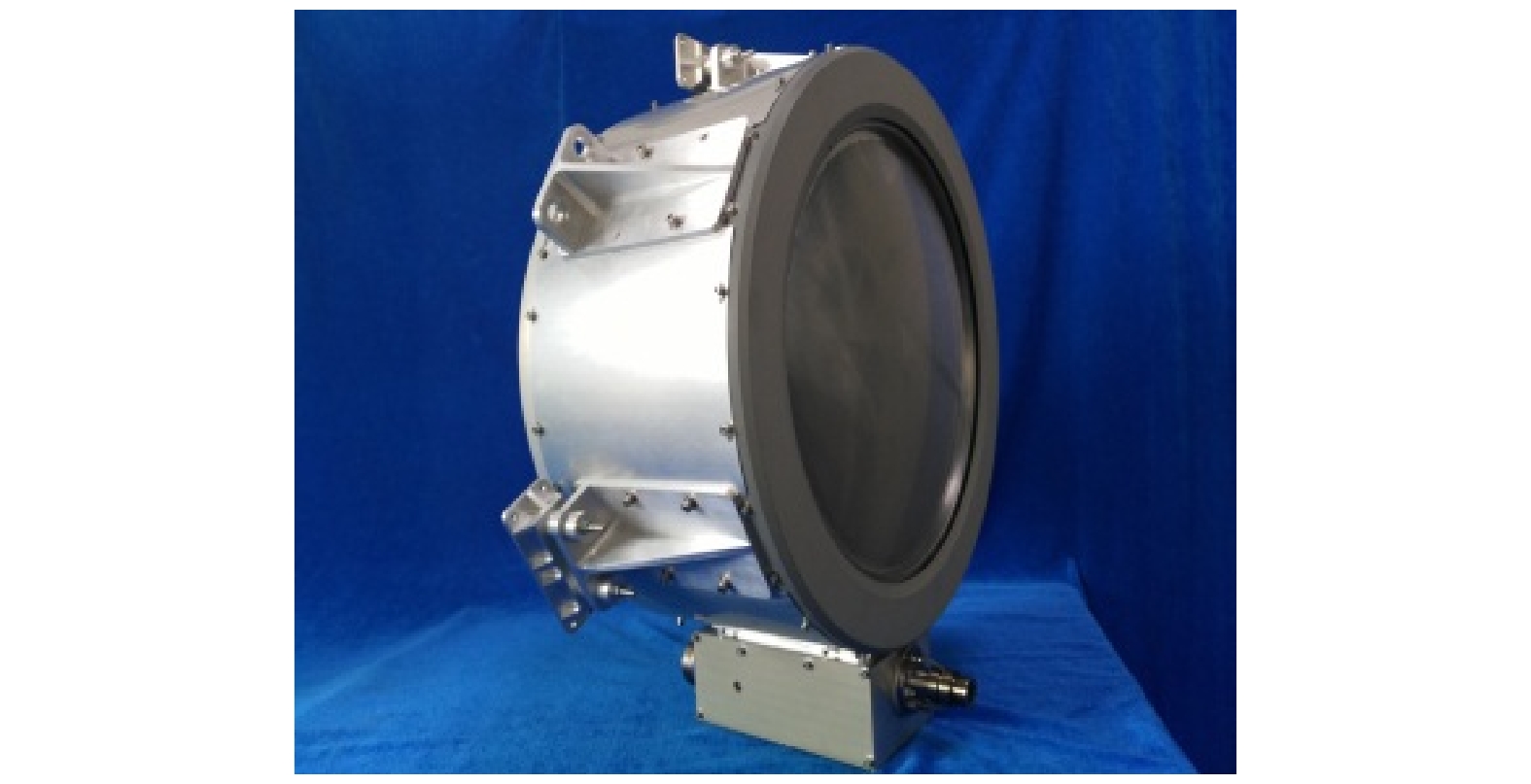
 下载:
下载:


